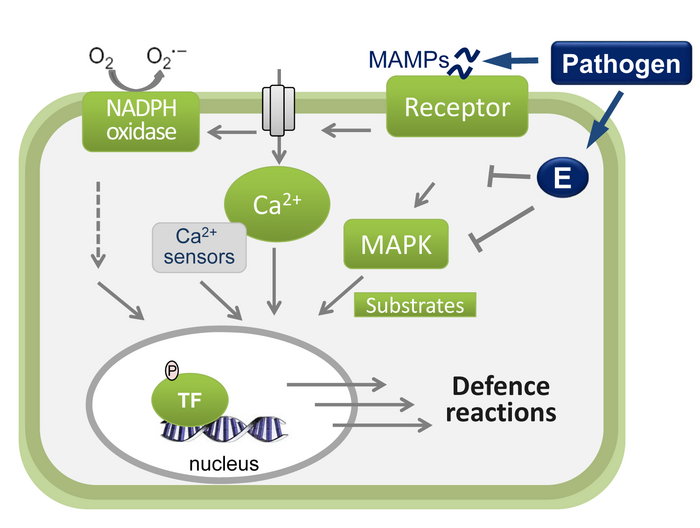Plants are constantly surrounded by microbes and possess precise mechanisms to mount resistance strategies when needed but also prevent unnecessary energy-consuming defense activation. Detection of microbes is mediated by plant surveillance systems, which is ultimately channelled into appropriate immune responses through intracellular signal transduction networks. Upon receptor-mediated recognition of microbe-associated molecular patterns (MAMPs), ion fluxes across the plasma membrane are immediately induced. This is tightly linked to an increase in cytoplasmic calcium levels (which is perceived by calcium sensing proteins) and accompanied by activation of protein kinases (e.g. CDPKs/calcium-dependent protein kinases and MAPKs/mitogen-activated protein kinases), reactive oxygen species production, and ultimately expression of defense genes as well as accumulation of defense molecules. The temporally and spatially fine-tuned defense response calls for an integrative coordination of all these subsets of signaling events. Pathogens, on the other hand, have evolved effectors (E) that subvert plant signaling and interfere with immunity-related defense. Using model plant systems such as Arabidopsis thaliana, our research aims to unravel the early plant cellular signaling network and the interplay with pathogen effectors.
This page was last modified on 27 Jan 2025 27 Jan 2025 .


